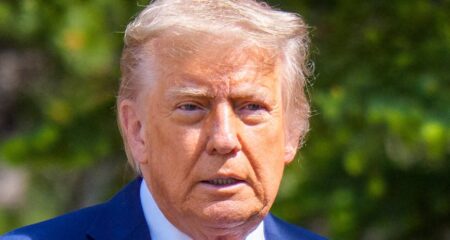Traveling abroad offers a great opportunity to pick up unique finds that you can’t buy anywhere else. But in addition to that, right now there’s a “golden opportunity” to buy high-quality goods you might ordinarily buy at home for less, said Michael Soud, an international attorney and co-founder of Travel Insighter.
Rising prices in the United States — due to tariffs combined with favorable exchange rates for the U.S. dollar — make it a great time to shop abroad if you know what to look for and where to look, he said.
Amy Siegal, an independent travel adviser at VWT by Chase Travel, agrees. Whenever she helps a client book a trip, she gives them tips about what to shop for at their destination. Often, her advice is based on favorable currency exchange rates and the availability of value added tax refunds.
We asked travel and economic experts for advice about what to buy abroad and how to save even more. Here’s what they said.
What To Look For And Where To Look
Skin Care
Skin care can cost a lot less abroad, especially if you purchase it in the country where it’s made, Soud said.
Georgia Fowkes, a travel adviser with Altezza Travel, makes it a point to visit small pharmacies whenever she is in France. These pharmacies usually sell classic French skin care brands like Nuxe, Caudalie and Bioderma at prices significantly less than similar products go for in the U.S.
LILLIAN SUWANRUMPHA via Getty Images
Similarly, South Korean skin care products can cost much less in South Korea than in the U.S., Soud explained. That includes even well-known brands like Innisfree and Laneige, he said. Even if you can’t find the exact skin care product you use at home, if you look for locally made products, you may be able to find something pretty close at a steep discount.
Electronics
Electronics are often significantly cheaper abroad than in the United States, explained Leon Huang, a supply chain expert and CEO of RapidDirect. That’s especially true when traveling to East and Southeast Asia, where many electronics are manufactured. Electronics that are sold in the region where they are made are often priced at a lower price point “without U.S.-bound markups, tariffs, rebranding costs” or high shipping costs, he explained. “When you buy from the source region, you avoid those cumulative costs” and avoid markups added by at least one or two levels of middlemen, Huang said.
However, Doug Carey, a certified financial analyst with experience in international economics, cautions that purchasing electronics abroad might not be the best idea if a good warranty is important to you. He explains that warranties for electronics are often only valid in the country where you purchased the product. It’s also important to make sure any electronics you buy abroad can be used in the United States. For example, the plug type may differ or setup instructions may not be available in English. Nevertheless, the lower cost may be worth the risk if everything checks out.
Clothing And Accessories
Clothing and accessories made abroad are often less expensive abroad because they don’t include a markup for import taxes, Carey explained. “In France, Italy and Spain, designer and luxury clothing and accessories like Gucci, Prada and Chanel are often 20 to 40% cheaper” than in the United States, he said. Leather goods like belts, bags and jackets usually sell for less, especially in Italy, where many leather items are crafted, Carey said. Even fast fashion may cost less abroad. For example, clothing made by Zara and Mango usually costs less in Spain, where the brands are headquartered, Carey said.
You may also find tailored clothing abroad for a fraction of the cost of made-to-measure clothing at home. “It’s always been the case that tailored clothing is significantly cheaper in Vietnam and Thailand, allowing Americans to upgrade their wardrobe without breaking the bank,” Soud said. Fowkes once had a high-end coat made-to-order in Florence, Italy. “It cost less than what you’d pay for fast fashion in the States. Easily one of my smartest purchases,” she said.

Alcohol (especially wine)
Alcohols often costs less abroad because they’re actually made there.
“In Europe, wine and spirits are often much cheaper and better. Examples are Bordeaux from France, Port from Portugal and Scotch from Scotland,” Carey said. Christina Ernst, a travel adviser and founder of VIP Travel, said that purchasing wine abroad is an “incredible value.” She usually stocks up when she travels because Federal Aviation Administration regulations don’t limit how much wine you can put in checked luggage due to its lower alcohol content.
How To Save Even More
Save more with a VAT refund.
VAT is a type of sales tax used worldwide, although it goes by different names in different countries. The amount of VAT charged by countries varies, typically ranging from 5% to 25%, Soud said.
Americans traveling abroad may be able to save more on already discounted goods by getting a VAT refund before they head home. Travelers to Europe and elsewhere can usually get a VAT refund for new, unused goods they take home in their luggage, such as clothing, shoes and skin care still in their original packaging, Sound explained.
However, the process and requirements for getting a VAT refund vary by country. Some countries also require that you spend a minimum amount to claim a refund. Determining exactly how much you will save can be tricky. Nevertheless, if you shopped till you dropped or bought pricey luxury goods, it’s probably worth your while to look into the specifics.
Try to keep your spending under $800.
With a few exceptions, if you spend more than $800 on goods abroad, you need to pay tariffs when you return to the United States, said Adam Dayan, an immigration attorney and founder of Consumer Law Group. The amount you need to pay varies based on the item but is typically 3% to 10% of the item’s value, he explained. This could offset some savings, so keeping an eye on your total spending is a good idea.
Dayan also advises travelers to stay away from counterfeit goods like fake luxury purses because there is a good chance customs will seize them. According to the U.S. Customs and Border Control, it’s illegal to purchase counterfeit goods and bring them into the United States. That’s because they may be made with substandard products that are hazardous to your health, and they may negatively impact the U.S. economy by leading to lost profits and jobs over time. As an added precaution, Dayan advises shoppers to check Federal Drug Administration and Customs and Border Patrol regulations if they buy anything edible, medicinal or health-related because customs can seize items that travlers are prohibited from bringing into the United States.
Read the full article here








